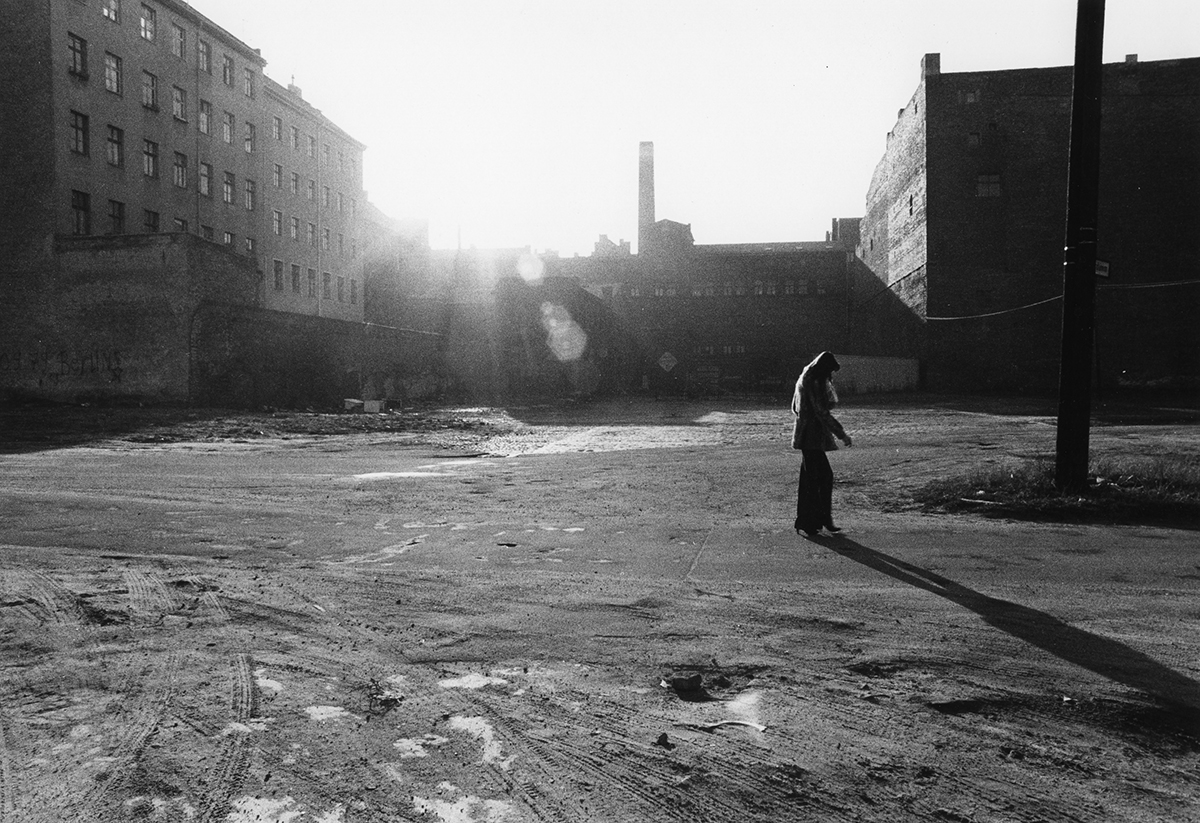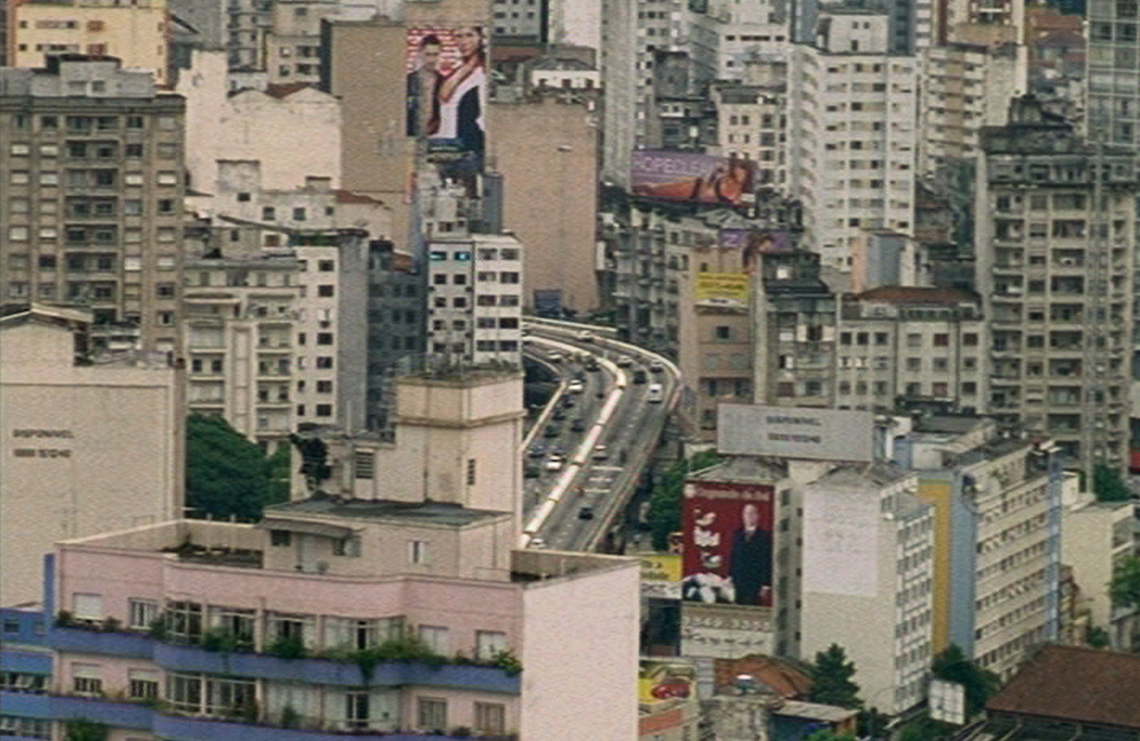In der Dämmerstunde - Berlin - de l’aube à la nuit / Resonating Surfaces
Followed by a conversation with Annik Leroy and Manon de Boer on sound and resonance in their work
Courtisane is een platform voor film en audiovisuele kunsten. In de vorm van een jaarlijks festival, filmvertoningen, gesprekken en publicaties onderzoeken we de relaties tussen beeld en wereld, esthetiek en politiek, experiment en engagement.
Courtisane is a platform for film and audiovisual arts. Through a yearly festival, film screenings, talks and publications, we research the relations between image and world, aesthetics and politics, experiment and engagement.
Followed by a conversation with Annik Leroy and Manon de Boer on sound and resonance in their work

In some ways reminiscent of Claudia von Alemann’s Die Reise nach Lyon, which came out in the same year, Annik Leroy’s debut film follows the filmmaker as she wanders through the ghostly twilight zones of Berlin in search of a past that no longer exists. Another act of remembering as spatial experience, a journey that traverses space to become, in time, a peregrination. “With this film I try to retrace my journey, my story through the ruins, neighbourhoods, and streets of Berlin. I filmed the dialogue that took place between the city and myself, the wanderings in the old neighbourhoods (Moabit, Kreuzberg, Wedding), places where you can still find most of the traces of the past, or rather what’s left of them.” Shot in a time seemingly far from today’s neoliberal explosion in Berlin, the film depicts the city’s crumbling surfaces and desolated wastelands as the silent witnesses of a tragedy that has left deep wounds. A tragedy that finds resonance in literary and musical fragments borrowed from the work of Gottfried Benn, Else Lasker-Schüler, Witold Gombrowicz, Peter Handke, Gustav Mahler and Richard Wagner. From the crunching sounds of Leroy’s footsteps on the snowy shores of the Landwehrkanal, to overheard murmurations of faceless voices on the U-Bahn train and loudspeakers announcing the end of the line, the film renders the city as a vast cavern of sound, impregnated with present absences and absent presences that haunt its phantasmic landscapes.
"We discover the sounds of a claustrophobic city and get lost between loudspeakers announcing dead-end streets. We overhear the constant murmur of foreign languages trying to find a voice in a wasteland of asphalt, street lights and the Berlin Wall, marked by darkness and scars of the past. ‘Just don’t stare at a wall’, declares Gombrowicz, and the film moves on. Leroy searches for traces of World War II as well as for love and humanity. It’s a contradiction, but it contains the darkened German soul: how to make an emphatic image of this place?” (Patrick Holzapfel)
Newly digitized version

Cries of death open Resonating Surfaces: the cry of Lulu from Alban Berg’s eponymous opera, and that of Maria, a character in Wozzeck, another opera by the same composer. In the resonance of these vocal timbres, distinct degrees of life-affirmation arise, even and above all in the face of death. Brazilian psychoanalyst Suely Rolnik wrote: “It is a recognition that, even in the most adverse situations, it is possible to resist the terrorism against life, against its desiring and inventive potency, and to stubbornly go on living. Together, Lulu’s and Maria’s cries convey this lesson and contaminate us.” This sonic experience lies at the heart of Resonating Surfaces; an experience that launched a personal movement of liberating effect, de-anesthetizing the marks of the trauma caused by dictatorship and imprisonment. This experience is conveyed by Rolnik, whose story we hear unfolding throughout the film, as the use of the voice gradually shifts from timbre to language. Made in close collaboration with violinist and composer George van Dam, Resonating Surfaces situates Rolnik in the context of the sounds and sensations of São Paulo, her native city, as well as the intellectual atmosphere of 1970s Paris, the city of her exile. In its open and subtle orchestrations of the spaces between image, sound and voice, the film’s formal inventiveness seems to resonate with Rolnik’s appeal to open our resonant bodies to the forces of the world’s otherness and, above all, to tune our hearing to the affects that each encounter mobilizes.
“One could say that de Boer’s films explore the contradictory relation between perception (based on the recognition of preordered forms) and sensation (meaning the open-ended contact with the flux of physical phenomena) — of the kind that Suely Rolnik also discovers in aesthetic experience... De Boer recently cited Rolnik’s distinction between ‘the sensation of the ‘world-as-force-field’’ and the ‘perception of the ‘world-as- form’’, in order to identify what is at stake in her films. Responding to the kinship between her own artistic sensibility and Rolnik’s philosophical approach, de Boer made Rolnik the subject of Resonating Surfaces, the work that best reveals the political stakes of de Boer’s art.” (TJ Demos)
Newly digitized version with 5.1 sound mix